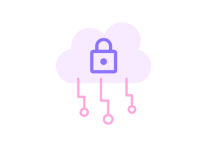
In a study, Gartner confirms that this category is growing. The simplicity provided by PaaS allows start-ups to quickly launch their web services and mobile applications without worrying too much about their technology infrastructure.
Companies are changing tack. More and more of them are relying on the cloud for their infrastructure. Admittedly, PaaS (Platform as a Service) represents only 8% of the total public cloud market. But this set of technologies serving as the basis for other applications, processes, or technologies benefits from the call for air in favor of these online solutions.
Migration to the cloud has indeed accelerated. Last April, the firm predicted that the public cloud market would surpass the $300 billion mark by 2021, growing 21% in 2018 alone. 360 suppliers with a single segment Regarding PaaS, this market should reach $20 billion in revenue by the end of this year and exceed $34 billion in 2022. Again, the trend has been underestimated. In 2012, Gartner stated that PaaS market revenues would reach nearly $3 billion by 2016. The switch to PaaS can be explained, among other things, by diversity. Gartner separates this market into 21 segments. But 90% of providers only offer one of these segments. There are over 550 offers, from over 360 vendors. The firm warns companies. Working with multiple vendors can easily complicate cloud management and contribute to increased costs. On the other hand, the firm warns the suppliers. As companies mature on cloud issues, they increasingly favor vendors with both IaaS and PaaS capabilities. With the attention of CIOs and developers focusing on IaaS, PaaS (Platform-as-a-Service) is struggling to take off. Should we, therefore, consider that he is dead? If SaaS (Software-as-a-Service) is acclaimed by the majority of organizations, and if IaaS (Infrastructure-as-a-Service) solutions are very successful, PaaS, which entered the race much later to the cloud, has not yet succeeded in establishing itself. Its use is even far below initial forecasts.
First observation, most developers opt for the IaaS core, which offers them in particular computing and storage platform capacities. The second observation, developers do not like to be confined in a sandbox. This sentiment comes from PaaS vendors placing restrictions on components of the cloud architecture, such as tools, databases, and programming languages, that developers don’t like. Third observation, IaaS seems to be a better fit than PaaS for DevOps organizations, because it provides the operational platforms that developers will ultimately use: those of the IaaS platform, as well as their on-premises environments. , where they can replicate in an IaaS cloud.
The last observation is the lack of standardization in the offers of PaaS providers. Certainly, the field lends itself to diversity, but each emphasizes specific points, which on the database, which on programming languages, others on specific standards. And the developer struggles to navigate and especially to find the answer to his expectations, forced to follow a closed approach, that is imposed by the supplier. But does this mean the end of PaaS? In the uses assigned to it at the origin of PaaS, the latter has not met with the expected success. But he has not yet given the full dimension of his abilities. This could come from the project undertaken by many CIOs who seek to separate from the ‘legacy’. Announcing the death of PaaS is therefore certainly premature. If IaaS is attractive, the movement committed to infrastructures could reserve a place, perhaps limited but of choice, for PaaS, in a hybrid approach between a cloud offering the criticality required of infrastructures and the strategic need to maintain direct control over industrialized computing that has proven itself.

I like this web blog it’s a master piece! Glad I observed this ohttps://69v.topn google.Raise blog range